The Best Neville Goddard Books: 15 Books Ranked From Beginner to Advanced
In this blog post, I will share the 15 best Neville Goddard books ranked by difficulty and popularity and why you should read them. Whether you are a beginner or an advanced student of Neville’s teachings, you will find something valuable and inspiring.
Table of Contents:
The 15 Best Neville Goddard Books: Table Overview
| Name of the book* | Publishing Year | Reader Level | Average Reader Rating** | Why you should read it | |
|---|---|---|---|---|---|
| 1 | At Your Command | 1939 | Beginner | 4.6 / 5.0 | Introduces the concept of awareness as the only reality and shows how to create your reality from the inside out. |
| 2 | Your Faith Is Your Fortune | 1941 | Intermediate | 4.5 / 5.0 | Shows how to apply spiritual faith principles to create good fortune. |
| 3 | Freedom for All—A Practical Application of the Bible | 1942 | Advanced | 4.5 / 5.0 | Exercises for applying Goddard’s concepts through biblical stories. |
| 4 | Feeling Is the Secret | 1944 | Beginner | 4.4 / 5.0 | Explains Goddard’s visualization techniques and feeling the wish fulfilled. |
| 5 | Prayer—The Art of Believing | 1945 | Intermediate | 4.4 / 5.0 | Connects Goddard’s ideas to Scripture to give a spiritual context and basis for his work. |
| 6 | The Search | 1946 | Intermediate | 4.0 / 5.0 | Describes Goddard’s mystical experiences and insights into the Bible’s true meaning. |
| 7 | Five Lessons: A Master Class by Neville Goddard | 1948 | Intermediate | 4.6 / 5.0 | Covers the core principles and techniques of Goddard’s teachings in depth. |
| 8 | Out Of This World: Thinking Forth-Dimensionally | 1949 | Intermediate | 4.3 / 5.0 | Shows how to live from the end and use fourth-dimensional thinking to change reality. |
| 9 | The Power of Awareness | 1952 | Beginner | 4.4 / 5.0 | Provides the foundational understanding of Goddard’s perspective on consciousness. |
| 10 | Awakened Imagination | 1954 | Advanced | 4.4 / 5.0 | Helps you awaken your imagination and use it to create your reality. |
| 11 | Seedtime and Harvest | 1956 | Advanced | 4.6 / 5.0 | Offers deeper philosophical examinations of imagination and consciousness. |
| 12 | I Know My Father | 1960 | Advanced | 4.5 / 5.0 | Reveals humanity’s true divine nature through spiritually awakened imagination. |
| 13 | The Law and The Promise | 1961 | Intermediate | 4.3 / 5.0 | A collection of stories and testimonials from people who applied the law of assumption. |
| 14 | He Breaks the Shell | 1964 | Advanced | 3.8 / 5.0 | Covers topics such as the nature of God and the nature of reality. |
| 15 | Resurrection | 1966 | Advanced | 4.4 / 5.0 | Explains the true meaning of resurrection, which is not a physical event. |
*The names of these books are hyperlinked to sellers if you want to purchase them. They are not affiliate links! I want to clarify that I am not an affiliate for any of these sellers. All the links I have included in this blog post are solely to provide you with information on where to find them.
**The ratings present here are based on the average rating of each book on goodreads.com.
Some of these books were also published under different titles, and some have been compiled into posthumous collections. However, the 15 Neville Goddard books listed above are generally considered Goddard’s complete works.
Neville Goddard
Neville Goddard was a prolific metaphysical teacher and author who introduced the law of assumption to us.
Goddard’s books are known for their simple yet profound teachings on the power of the imagination to create reality.
His work has influenced many people, including authors, teachers, and spiritual leaders.

At Your Command (1939)
At Your Command introduces you to the concept of awareness as the one and only reality and how to use it to manifest your desires.
It explains how the Bible is a psychological drama in man’s consciousness and not a record of historical facts.
Book Summary
- It consists of one chapter, which is a transcript of a lecture that Neville gave in 1939.
- The book’s central theme is that you are the creator of your reality. You can change your circumstances by changing your awareness.
- It shows you how to interpret the Bible as a symbolic representation of the states of consciousness you can experience and embody.
- It explains how vain repetition of loud words or affirmations can be contra-productive.
- Published in 1939, soon after Neville gave the lecture.
Pros and Cons
Pros:
- Short and concise, without too much metaphysical jargon or biblical references.
- Provides simple instructions on how to use the power of your awareness to create your desired reality.
- A great introduction to Neville’s teachings because it’s short and easier to understand than his other works.
Cons:
- It does not cover many topics or techniques Neville later developed in his other books and lectures.
- Based on a lecture, it does not have a clear structure, and it might be hard to follow for some readers.
What You Will Learn:
- How to use the power of their mind to impress your subconscious mind and create the life you want.
- How to overcome challenges and improve your situation by changing your awareness and assuming the feeling of the wish fulfilled.
- The book can also help you to understand the Bible in a new and deeper way.
Ratings:
Reader Level: Beginner
Readability: 4/5
Depth of Content: 3/5
Overall Impact: 4/5
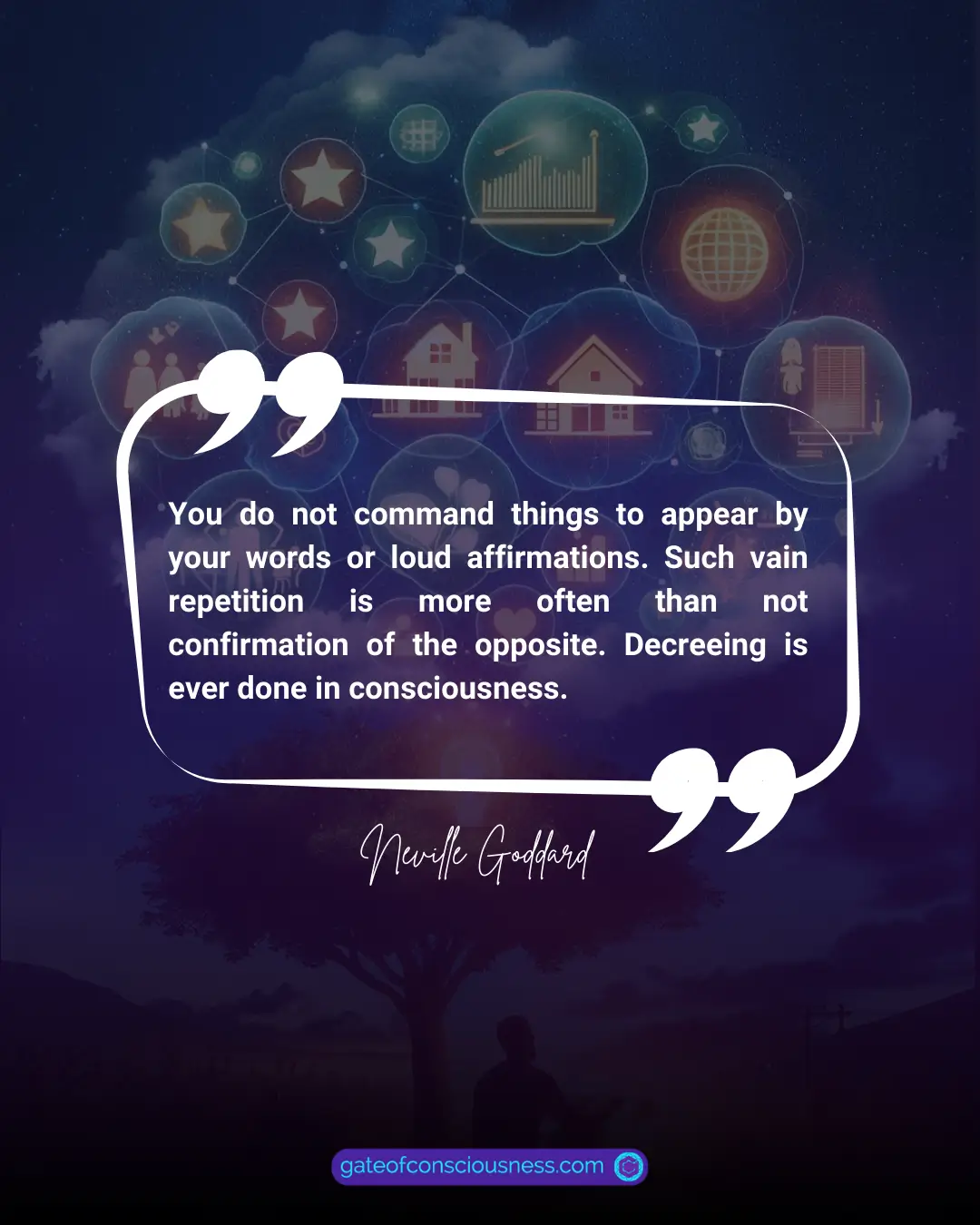
Your Faith is Your Fortune (1941)
This book goes deeper into the spiritual and philosophical aspects of manifestation.
It explains how to use the power of your faith to transcend the limitations of the physical world. It also includes many success stories from Neville and his students.
Book Summary
- 27 chapters, each focusing on a different aspect of manifesting.
- The main theme is that you can create anything you desire by believing in its reality.
- The book shows you how to interpret the Bible as a psychological manual for manifestation.
- Published in 1941.
Pros and Cons
Pros:
- Very detailed and comprehensive.
- Covers many topics and techniques that Neville later developed in his other books and lectures.
- Provides many testimonials and success stories from Neville and his students.
- A great resource for intermediate and advanced students.
Cons:
Not very easy to read and understand.
- Requires some prior knowledge and experience with these concepts.
- Metaphysical and philosophical, so it might not appeal to readers who prefer a more straightforward approach.
What You Will Learn
- How to use the power of your faith to create your reality.
- Hidden meanings and symbolism behind the biblical stories and characters.
- How the subconscious mind works.
- How to use the law of consciousness.
Ratings
Reader Level: Intermediate
Readability: 3/5
Depth of Content: 5/5
Overall Impact: 4/5

Freedom for All—A Practical Application of the Bible (1942)
Freedom for All is heavily based on the metaphysical interpretation of the Bible. It reveals the hidden meanings and symbolism behind the biblical stories and characters.
This book also challenges the conventional beliefs and assumptions about God, the self, and the world. It invites the reader to experience the ultimate truth of their divine nature and creative power.
Book Summary:
- Ten chapters, each focusing on a different biblical story and its metaphysical meaning.
- The main theme is that freedom for all is possible. It depends on the individual’s recognition and acceptance of their true identity as God.
- The book teaches you how to use your imagination, feelings, and faith to impress your subconscious mind and create your reality.
- Published in 1942.
Pros and Cons
Pros:
- Reveals the hidden meanings and symbolism behind the biblical stories and characters.
- Provides a new and deeper perspective on the nature of God, the self, and the world.
- Challenges the conventional beliefs and assumptions.
- A great resource for advanced students of Goddard’s work.
Cons:
- Not easy to read and understand.
- Requires prior knowledge and experience with Goddard’s work.
- Very metaphysical and philosophical.
- Might not appeal to readers who prefer a more practical and straightforward approach to manifestation.
What You Will Learn:
- How to use the power of your mind to create their reality.
- How to achieve your true potential by recognizing and accepting your true identity as God.
- To understand the Bible in a new and more profound way.
Ratings
Reader Level: Advanced
Readability: 2/5
Depth of Content: 5/5
Overall Impact: 4/5

Feeling Is The Secret (1944)
The book talks about the power of feeling. It is short and clear, without too much metaphysical jargon.
This book is a great starting point for beginners. It delivers clear explanations of Goddard’s main principles.
Book Summary:
- Four chapters, each dedicated to a different aspect of manifestation: law and its operation, sleep, prayer, and spirit-feeling.
- The main theme is that the ‘feeling‘ is the secret; the feeling of the wish fulfilled is the key to manifesting.
- It shows readers how to manifest their desires by assuming the feeling of the wish fulfilled.
- The book explains how to use your feeling, imagination, and awareness to create your reality.
- It instructs how to use the power of sleep, prayer, and spirit feeling to enhance your manifestation.
- Published in 1944.
Pros and Cons
Pros:
Short, concise, and clear, without much metaphysical jargon or biblical references and interpretations.
- Simple explanations make it much easier to grasp the underlying principles.
- Straightforward and clear instructions.
- As an easy read, it’s a good starting point for beginners.
Cons:
- Less conceptual depth than others but provides clear how-to advice.
- Does not cover topics and techniques that Neville developed in his later books.
- Based on a lecture, it doesn’t have a clear structure or organization.
What You Will Learn:
- How to use your feeling and imagination to create desired reality.
- How to use sleep, prayer, and spirit-feeling to enhance your manifesting skills.
Ratings
Reader Level: Beginner
Readability: 4/5
Depth of Content: 3/5
Overall Impact: 4/5
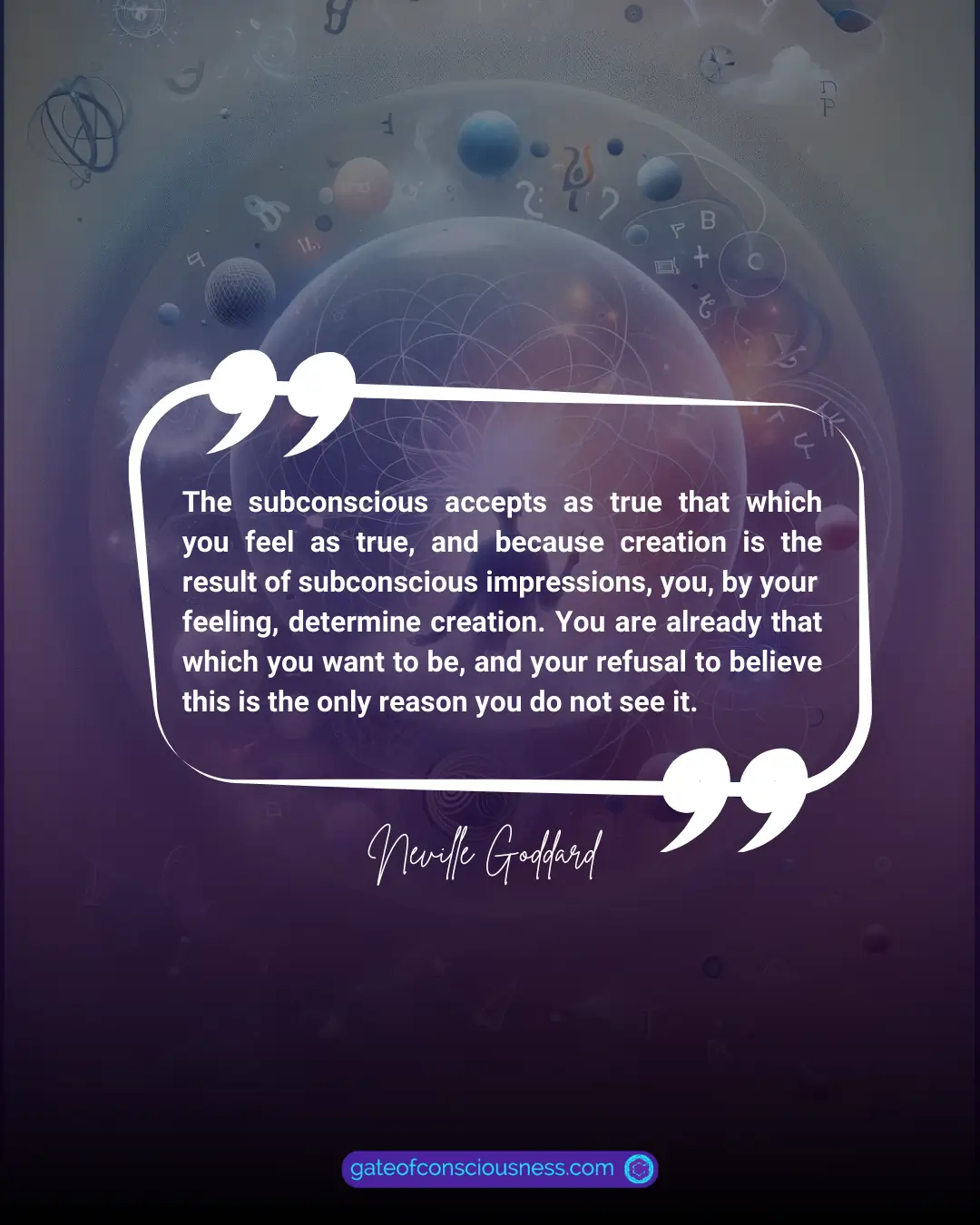
Prayer: The Art of Believing (1945)
This book is a manual on how to pray effectively and manifest your desires. Goddard defines prayer as the art of believing. He argues prayer is imagining things into being, not requests to an external God. In this book, he explains how to use the concept of prayer to create reality. The book also includes
Book Summary
- Seven chapters, each focusing on a different aspect of prayer: the law of reversibility, dual nature of consciousness, controlled reverie, law of thought transmission, and good tidings.
- The main theme is assuming the wish fulfilled within yourself rather than asking for it.
- Prayer is exercising creative conscious thinking and feelings that manifest results.
- Contains a series of prayers for various purposes and situations.
- Touches on praying for others.
- Published in 1945.
Pros and Cons
Pros:
- Provides biblical explanation for Goddard’s unorthodox teachings on prayer and spirituality.
- Connects his philosophy to a spiritual framework some readers cling to.
- Shows how to apply scripture and faith principles to shape reality intentionally.
Cons:
- May be off-putting or confusing for those wishing to separate Neville from religion.
- Unconventional interpretations could challenge certain believers’ dogmas.
- Scriptural analysis can get lengthy and dense.
What You Will Learn:
- Prayers are not requests to an external God but rather self-fulfilling assumptions.
- How your subconscious works, and how to manifest what you wish.
- How to use the law of reversibility, the dual nature of consciousness, the controlled reverie, and the law of thought transmission to improve your manifesting skills.
Ratings
Reader Level: Intermediate
Readability: 3/5 (scriptural analysis can be dense)
Depth of Content: 4/5 (thorough theological unpacking)
Overall Impact: 4/5 (spiritually groundbreaking for some)
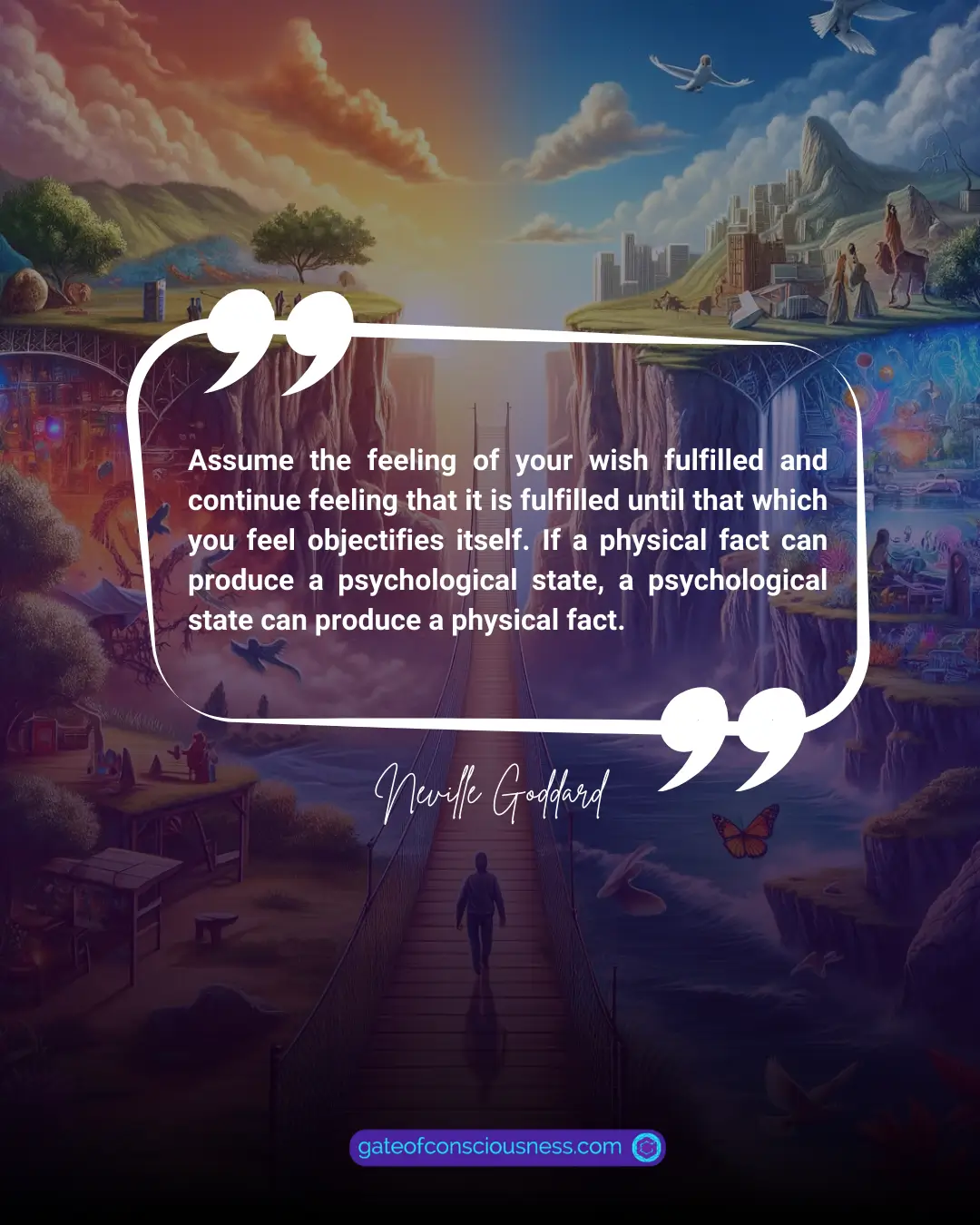
The Search (1946)
The Search is a personal account of Goddard’s spiritual journey and discovery of the law of assumption. It describes his experiences with various mystical phenomena, and insights into the Bible’s true meaning and the nature of God. It also offers advice on how to apply the law of assumption in your own life.
Book Summary
- It consists of one chapter and explains the different stages of the search for the truth.
- The central theme is that the search for the truth is the search for oneself.
- Using parables, Neville illustrates how consciousness shapes reality.
- Stories show characters controlling circumstances by changing within.
- Recurring themes about desire, belief, assumptions, and self-imagining.
- Published in 1946.
Pros and Cons
Pros:
- Engaging storytelling keeps readers interested.
- Relatable characters in everyday situations.
- Shows rather than tells Goddard’s philosophy.
Cons:
- Lesser focus on the mechanics of techniques.
- Interpretations are needed to understand full teachings.
- May seem vague or abstract to some readers.
What You Will Learn
- How imagined scenes from within you project outward.
- Your assumptions create your experiences.
- How to use consciousness strategically to achieve goals.
Ratings
Reader Level: Intermediate
Readability: 4/5 (enjoyable parables)
Depth of Content: 3/5 (messages subtly conveyed)
Overall Impact: 4/5 (principles still applicable)

Five Lessons: A Master Class by Neville Goddard (1948)
This book is a transcript of five lectures Neville gave in 1948, covering his core principles and techniques. It covers topics such as the power of imagination, the law of assumption, self-concept, and the power of faith.
The book offers a question-and-answer session with Neville Goddard and the audience.
Book Summary
- Five chapters, each corresponding to one of the five lessons: consciousness is the only reality, assumptions harden into fact, thinking fourth-dimensionally, no one to change but self, and remain faithful to your idea.
- The main theme is that consciousness is the only reality.
- You can create anything you desire by assuming the feeling of the wish fulfilled.
- Shows you how to use self-concept, and the power of faith to enhance your manifestation process and experience.
- Published in 1948.
Pros and Cons
Pros:
- Concentrated teachings packed with profound perspectives.
- Covers the core principles and techniques of Goddard’s teachings and the law of assumption.
- Includes mental exercises.
- Spiritually stimulating for those open-minded.
- Provides many success stories from Neville and his students.
- Includes a question-and-answer session with the audience.
Cons:
- Dense mystical interpretations.
- Not easy to read and understand.
- Requires some basic knowledge of Goddard’s practices and teachings.
- Based on lectures, it might be hard to follow for some readers.
What You Will Learn
- About multidimensional insights from the Scripture.
- How to examine identities and change the concept of self at a spiritual level.
- Gain clarity on human potential and divine creative power.
- How to bury the past by remaining faithful to your new concept.
Ratings
Reader Level: Intermediate
Readability: 3/5 (dense esoteric subject matter)
Depth of Content: 5/5 (profound mystical revelations)
Overall Impact: 4/5 (inspiring higher consciousness)

Out Of This World: Thinking Forth-Dimensionally (1949)
Out Of This World challenges beliefs about reality through Goddard’s ingenious, forth-dimensional lens.
This book explains how to use fourth-dimensional thinking to overcome the obstacles and limitations of the three-dimensional world.
Book Summary
- Four chapters: thinking fourth-dimensionally, assumptions become facts, power of imagination, and no one to change but self.
- The main theme is thinking fourth-dimensionally.
- The book focuses on how to live from the end and feel the reality of the desired state.
- It explores the power of imagination and self-concept.
- Published in 1949.
Pros and Cons
Pros:
- Filled with powerful concepts.
- Mind-expanding perspectives on the nature of reality.
- Encourages thinking outside 3D physical limitations.
- Inspires through possibilities of human consciousness.
Cons:
- Abstract concepts may be difficult to fully conceive.
- Requires openness to non-traditional spiritual ideas.
What You Will Learn
- About thinking and acting from the end.
- How to think fourth-dimensionally.
- What self-concept is and how to change it.
- How to answer the eternal question, “Who am I?“
Ratings
Reader Level: Intermediate
Readability: 3/5 (esoteric metaphysical topics)
Depth of Content: 4/5 (thought-provoking insights)
Overall Impact: 4/5 (paradigm-shifting perspectives)

The Power of Awareness (1952)
This is the most comprehensive book by Neville Goddard, and it’s a great book to start with. It will give you an understanding of how to manifest something.
It covers topics such as the nature of consciousness, the law of assumption, the power of imagination, the role of faith, and the importance of self-concept.
Book Summary
- 27 chapters
- The main theme is that consciousness is the only reality.
- Focuses on Goddard’s fundamental principles that anyone interested in manifesting can apply.
- Clarifies how awareness shapes one’s experience of reality.
- Presents techniques like imagining from the wish-fulfilled state.
- Published in 1952.
Pros and Cons
Pros:
- Lays a clear understanding of Neville Goddard’s core principles.
- Everything is explained in an easy-to-understand way.
- Readers find it much easier to follow than most of Goddard’s books.
- Practical yet profound explanations of human consciousness.
- Timeless principles that still ring true.
- A great resource for beginners and intermediate students.
Cons:
- May seem basic for those well-versed in Neville’s work.
- Doesn’t delve into applications as deeply as others.
You Will Learn
- How your imagined state becomes your belief and experience.
- How to consciously assume the feeling of your desires fulfilled.
- Reality is a subjective reflection of inner imagining.
Ratings
Reader Level: Beginner
Readability: 4/5 (straightforward and accessible)
Depth of Content: 4/5 (thought-provoking fundamentals)
Overall Impact: 5/5 (life-changing perspectives)

Awakened Imagination (1954)
Awakened Imagination is a quick guide to help you awaken your imagination and use it to create your reality. It explains the difference between imagination and fantasy.
It also includes a series of exercises to help you practice your imagination.
Book Summary
- Eight chapters, where Neville shares insights about multidimensional God-within.
- The main theme is that imagination is the creative power of your world.
- You can use your imagination to transform yourself and your reality.
- One of the most influential works on imagination by Neville Goddard.
- Explains the power of imagination to impress your subconscious and create your reality.
- Covers mystical and esoteric perspectives on imagination.
- Includes how to awaken a higher mind.
- Published in 1954.
Pros and Cons
Pros:
- Inspiring concepts elevate one’s spiritual awareness.
- Unlocks imagination’s immense divine creative capacities
- Mind-opening perspectives for non-dogmatic thinkers.
Cons:
- Abstract mystical teachings won’t resonate with everyone.
- Requires openness to ideas outside mainstream beliefs.
- May frustrate those seeking practical how-to advice.
What You Will Learn
- Broader definitions of God, self, and reality beyond intellect.
- How to use imagination to sculpt self-concept and change your future.
- How to develop the ability to imagine your reality as you desire it to be and stick to it.
- Faith in yourself as a divine creator being.
Ratings
Reader Level: Advanced
Readability: 3/5 (esoteric subject matter)
Depth of Content: 5/5 (profound revelations)
Overall Impact: 5/5 (paradigm-shifting introduction to higher mind)

Seedtime and Harvest (1956)
Seedtime and Harvest deeply explores consciousness and creation. It delves into the metaphysical meaning and symbolism of the Bible.
Book Summary
- Nine chapters, each focusing on a different biblical story or character and its metaphysical meaning.
- The book’s main theme is that the law of seedtime and harvest is the law of manifestation.
- Offers deep insights into the power of the subconscious mind and how to harness it.
- Explains law of correspondence: inner world reflected without.
- Discusses seed planting through imagination and harvest outcomes.
- Delivers profound insights into the nature of reality and human imagination.
- Published in 1956.
Pros and Cons
Pros:
- Explores consciousness and creation.
- Reveals the hidden meanings and symbolism behind biblical stories and characters.
- Provides successful examples from Neville Goddard and his students.
- A great resource for advanced students of Goddard’s practices and teachings.
Cons:
- Not easy to read and understand.
- Requires a lot of prior knowledge.
- More conceptual than practical, so it may not appeal to all.
What You Will Learn
- About the sowing the seed of your desire in your imagination and reaping the harvest in your reality.
- How your thoughts and feelings affect your external world.
- Powerful principles for manifesting your desires.
- How to reap tangible ‘harvests’.
Ratings
Reader Level: Advanced
Readability: 3/5 (dense philosophical insights)
Depth of Content: 5/5 (profound wisdom shared)
Overall Impact: 5/5 (paradigm-shifting perspectives)
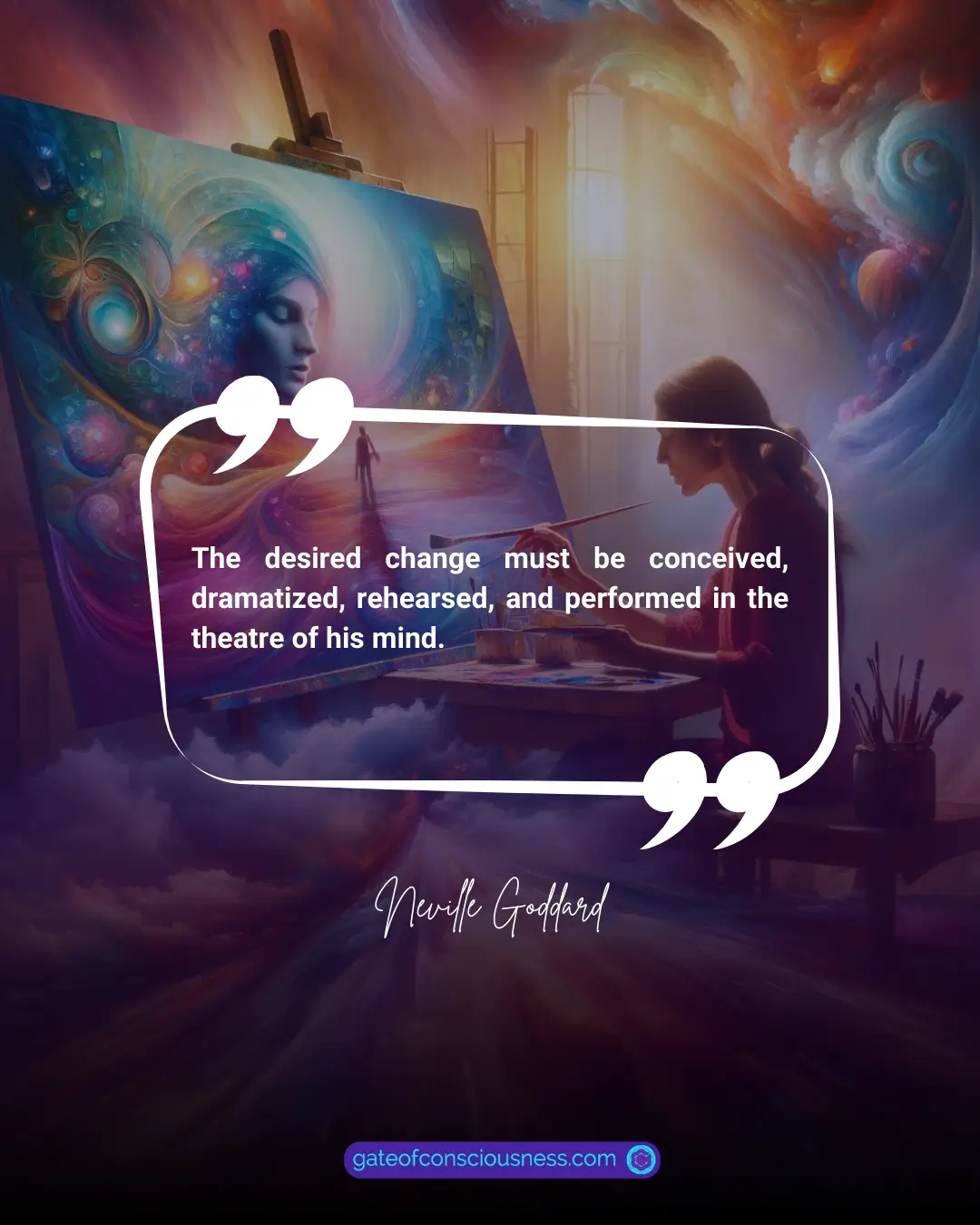
I Know My Father (1960)
I Know My Father unveils our suppressed divine inheritance. This book explores the relationship between the individual and the divine. It’s about understanding your divine nature and how this realization affects your life.
Book Summary
- Ten chapters, each focusing on a different stage or aspect of Neville’s search for the truth.
- The book’s main theme is the relationship between human consciousness and a higher spiritual concept referred to as “I am” or “My Father.”
- Points out that all individuals share the common awareness that “I am.”
- Emphasizes that our awareness of being is the ultimate reality and is equivalent to our concept of God or Father.
- Shows you how to interpret the Bible and apply the biblical principles and stories to your own life.
- Published in 1960.
Pros and Cons
Pros:
- Empowers readers to access higher spiritual awareness.
- Shifts perspective towards a more empowered self-view.
- Explains how to use these concepts to manifest our desires.
Cons:
- Not easy to read and understand.
- Requires prior knowledge and experience with Goddard’s teachings.
- Lacks step-by-step practical advice, more theoretical.
What You Will Learn
- The concept of self as God and its the implications for your personal life.
- Understanding the divine nature within and how it influences your reality.
Ratings
Reader Level: Advanced
Readability: 2/5 (esoteric theological philosophy)
Depth of Content: – 5/5 (profound mystical revelations)
Overall Impact: 4/5 (life-changing awakening to potential)
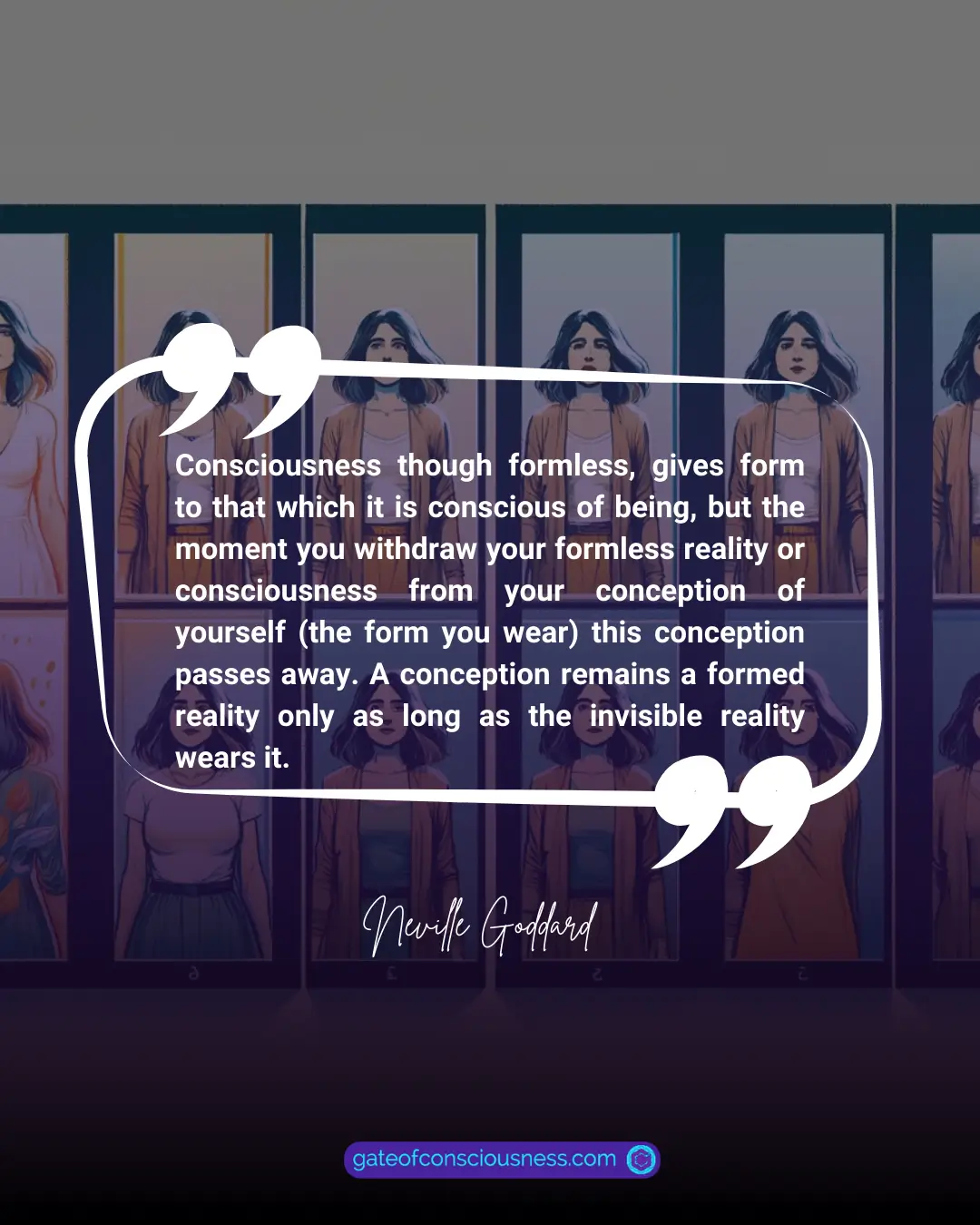
The Law and the Promise (1961)
This book is a collection of stories and testimonies from people who applied the law of assumption in their lives and achieved remarkable results.
It provides practical techniques and exercises to apply the law and the promise in your life.
Book Summary
- 15 chapters, each focusing on a different aspect of the law.
- The central theme is the law of assumption and its practical implications.
- Includes exercises to practice your imagination and improve your skills.
- Filled with real-life stories demonstrating the law in action.
- Published in 1961.
Pros and Cons
Pros:
- Presents all principles in a practical and easy-to-digest way.
- Rich with real-life examples, making it relatable and practical.
- Includes exercises.
Cons:
- Some stories may seem too simplistic or unbelievable for skeptics.
- Metaphysical and philosophical, so it might not appeal to some readers.
What You Will Learn
- About the power of imagination and belief.
- How to use the mind to create your reality.
- How to consciously assume desired states.
Ratings
Reader Level: Intermediate
Readability: 3/5 (depth of biblical analysis)
Depth of Content: 5/5 (profound integrated wisdom)
Overall Impact: 5/5 (profound review of Neville’s key lessons)

He Breaks the Shell (1964)
He Breaks the Shell is composed of mystical interpretations of biblical passages. It particularly focuses on examples where Jesus helps people overcome limitations or “shells.”
The “shells” represent beliefs, circumstances, and self-definitions that impose bounds on a person.
Book Summary:
- Only one chapter, which is a transcript of a lecture that Neville gave in 1964.
- The main theme is breaking free of limitations.
- Focuses on how Jesus helps people overcome their “shells.”
- Explores metaphysical concepts through mystical interpretations of Scripture.
- Explains how human consciousness can escape physical limitations.
- Shows how imagining beyond constraints reshapes reality.
Pros and Cons
Pros:
- Thought-provoking perspectives on expanding human potential
- Provides instructions on how to use your consciousness to create your desired reality.
Cons:
- Might be hard to follow for some readers.
- Esoteric ideas may confuse or frustrate literal-minded readers.
What You Will Learn:
- How to perceive beyond limiting shells of beliefs, identity, and 3D reality.
- Free yourself from constraints through imagination.
- Reshape any condition by envisioning freedom within.
Ratings:
Reader Level: Advanced
Readability: 2/5 (abstract philosophical-spiritual interpretations)
Depth of Content: 5/5 (insights into expanded consciousness)
Overall Impact: 5/5 (paradigm-shifting messages)
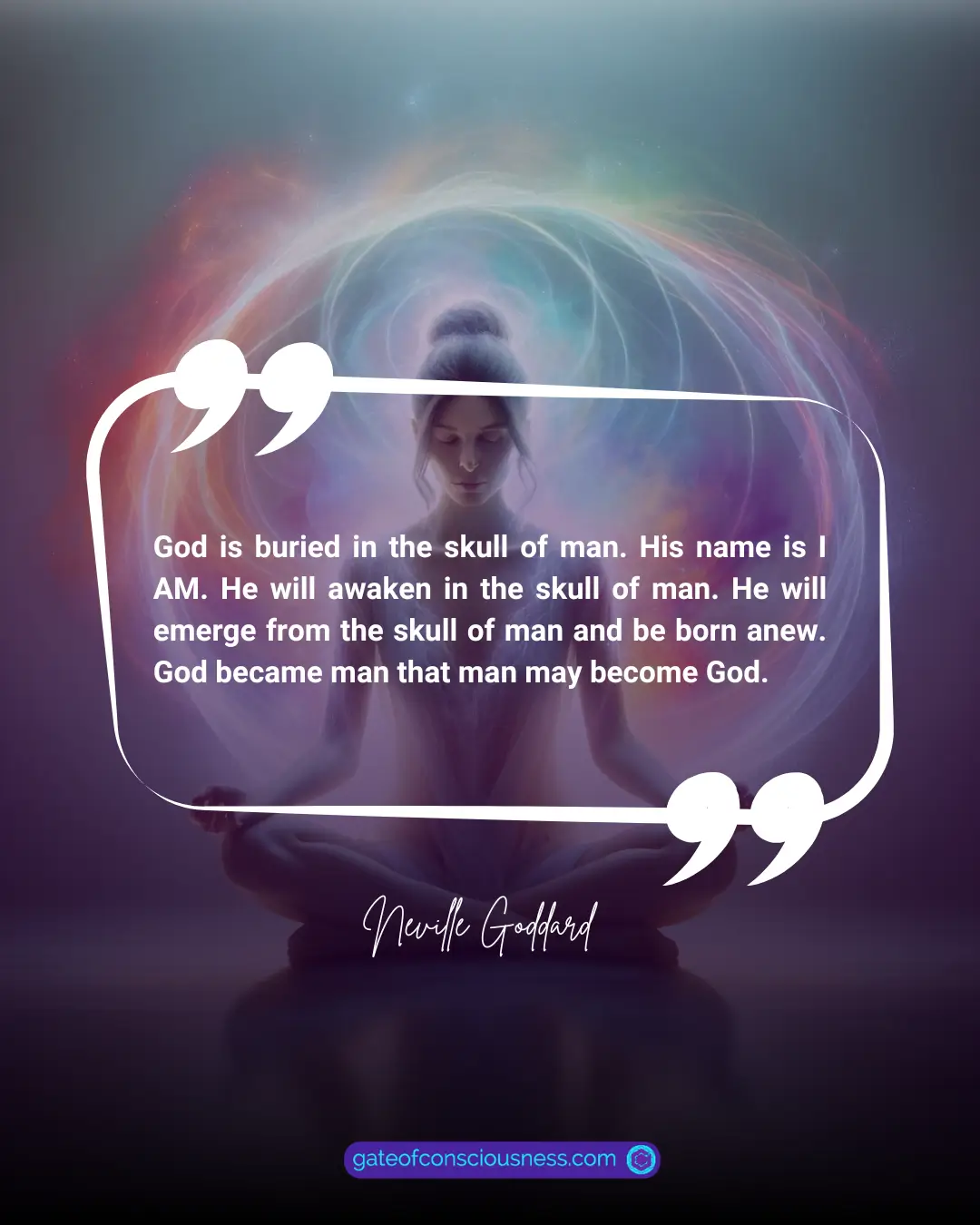
Resurrection: A Confession Of Faith (1966)
Resurrection is a little booklet by Neville Goddard. The theme is resurrection, both as a spiritual awakening and physical manifestation.
Book Summary:
- One chapter on the theme of resurrection.
- The central theme is exploring the metaphysical meaning of the resurrection from the Bible.
- Teaches death of old self and rebirth through imagination.
- Explains how assuming a changed self alters one’s world.
- Published in 1966.
Pros and Cons
Pros:
- Explains Biblical stories.
- Inspiring messages on the transformation of self and reality.
- A great resource for advanced students of Goddard’s teachings.
Cons:
- Esoteric analysis may confound more logically-minded.
- A lot of Biblical jargon.
What You Will Learn:
- How to die to current self-concept through imaginative conception.
- Arise transformed with God-given creative power within.
- Reshape any life condition by envisioning a new inner being.
Ratings:
Reader Level: Advanced
Readability: 2/5 (abstract theological, metaphysical philosophy)
Depth of Content: 5/5 (profound mystical understanding)
Overall Impact: 5/5 (empowering realizations of human potential)
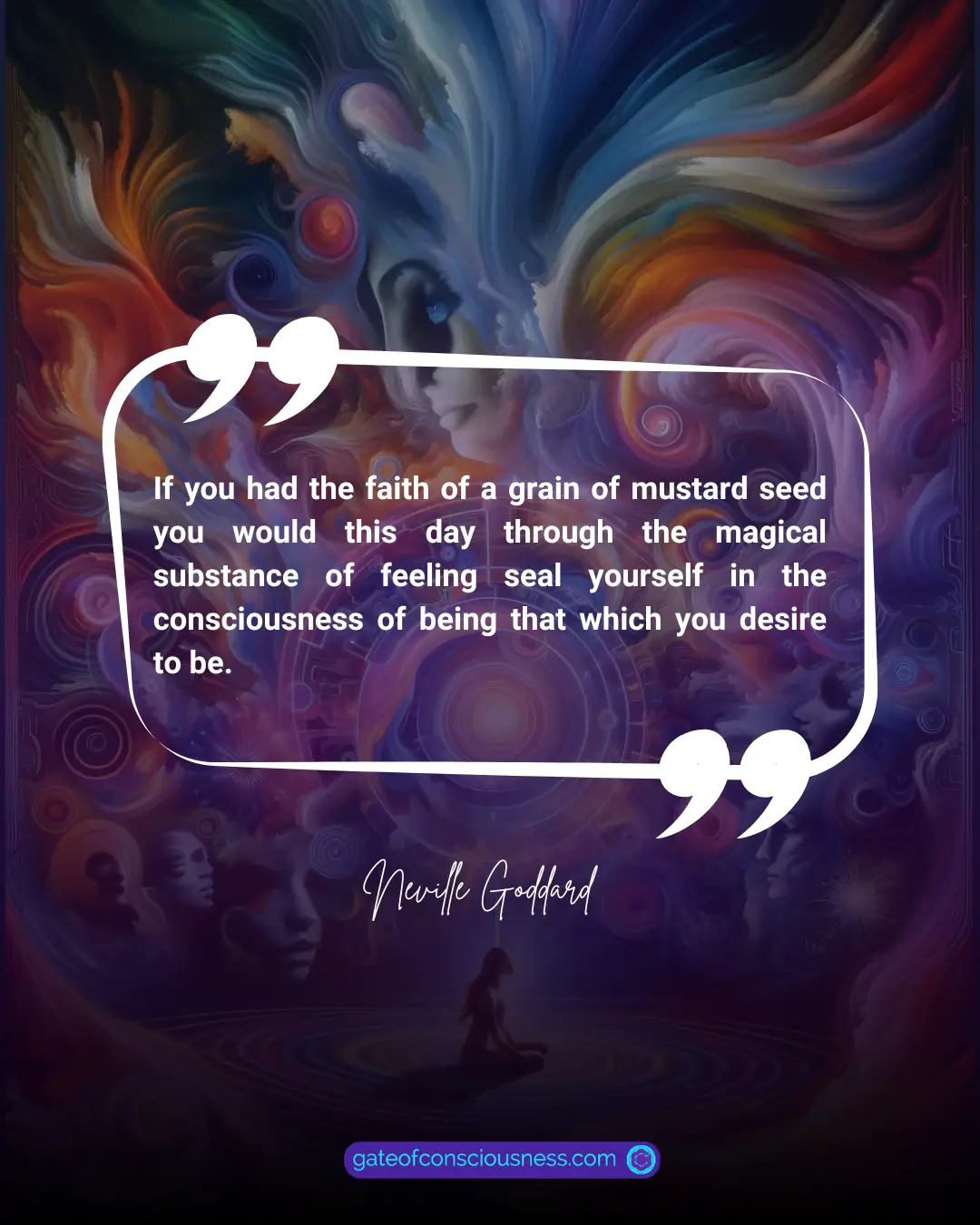
What Neville Goddard Book to Read First?
The Power of Awareness is considered one of his core works, so starting there provides essential context.
Feeling Is the Secret and At Your Command also explain his basic philosophies. These three books are great for people who are new to Neville Goddard’s work.
Does It Really Matter Which Book You Read First?
Yes, especially if you are new to Neville Goddard and his work. Starting with the “foundation” books like The Power of Awareness first will help the ideas presented in the later works resonate more fully. It’s a progressive approach that constantly builds and connects Neville’s ideas.
In What Order Should I Read Neville Goddard’s Works?
The foundation books, The Power of Awareness, At Your Command, and Feeling is the Secret, explain how imagination and feeling create reality.
They also delve deeper into techniques like visualization and assuming the feeling of the wish fulfilled. All three are great books to begin with.
The later works like I Know My Father and Resurrection build more upon concepts from the earlier books.
The following order moves generally from introductory to more advanced concepts.
Neville Goddard Books From Beginner to Advanced: Table Overview
| Level | Books | Explanation |
|---|---|---|
| Beginner |
| The foundation:
|
| Intermediate |
| Intermediate books:
|
| Advanced |
| Advanced books:
|
What Is the Best Book by Neville Goddard for Manifesting?
There’s no single “best” Neville Goddard book, as different books suit different people depending on their needs and learning styles.
For beginners, Feeling Is The Secret provides the clearest roadmap.
Books Your Faith Is Your Fortune and The Power of Awareness builds understanding.
How Do I Apply Neville Goddard’s Teachings?
Five suggestions to apply Neville Goddard’s teachings:
Listen to his lectures and read his books. Many of these are available for free online.
Read this blog if you need more information. A whole category called “The Law of Assumption” is dedicated solely to Goddard’s teachings.
Try this today:
Pick a particular wish or objective that you want to come true. Something you genuinely desire, not something you think you should want or that other people want for you.
Create a scene that implies your wish has been fulfilled. Use your imagination to make it as vivid and realistic as possible.
Enter a state akin to sleep (SATS) and replay your scene in your mind until you feel the emotion of your wish fulfilled.
Maintain a positive attitude and a mental diet that support your wish.
Do not doubt or worry about the outcome. Trust that your wish is already done and will manifest at the perfect time. This is called living in the end.
- Check out this blog post for more techniques: Manifest Like a Pro: Top 10 Law of Assumption Techniques by Neville Goddard.
Contact me anytime with questions via comments or the contact page. I respond promptly.
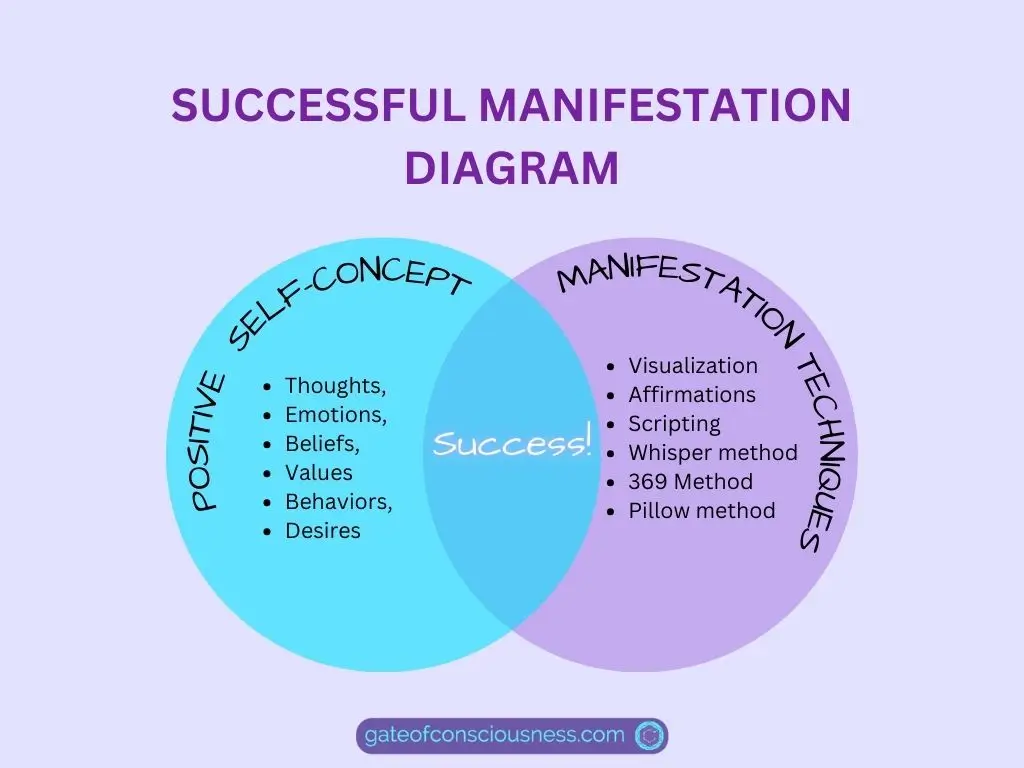
How Many Books Did Neville Goddard Write?
Neville Goddard wrote 15 books in his lifetime. They are:
- At Your Command (1939)
- Your Faith Is Your Fortune (1941)
- Freedom for All—A Practical Application of the Bible (1942)
- Feeling Is the Secret (1944)
- Prayer—The Art of Believing (1945)
- The Search (1946)
- Five Lessons: A Master Class by Neville Goddard (1948)
- Out Of This World: Thinking Forth-Dimensionally (1949)
- The Power of Awareness (1952)
- Awakened Imagination (1954)
- Seedtime and Harvest (1956)
- I Know My Father (1960)
- The Law and The Promise (1961)
- He Breaks the Shell (1964)
- Resurrection (1966)
Goddard’s Publisher
Most of Neville Goddard’s books are available in print and e-book formats.
While Neville was alive, DeVorss was his publisher and printed many of his books.
When you read a DeVorss version of a Neville book, you can rest assured that you are reading an original or a reprint of Neville’s authentic work. DeVorss editions are reliable and trustworthy.
Other Works Attributed to Neville Goddard
Keep in mind that not all books labeled “by Neville Goddard“ were actually written by him.
There are numerous instances where Goddard is credited as the author, but the books are not actually his. Some of them are interpretations of Goddard’s work, while others were created by his students.
For example, Goddard’s student, Margaret Ruth Broome, wrote:
- The Creative Use of Imagination
- The Miracle of Imagination
She wrote these books based on her notes and in her style.
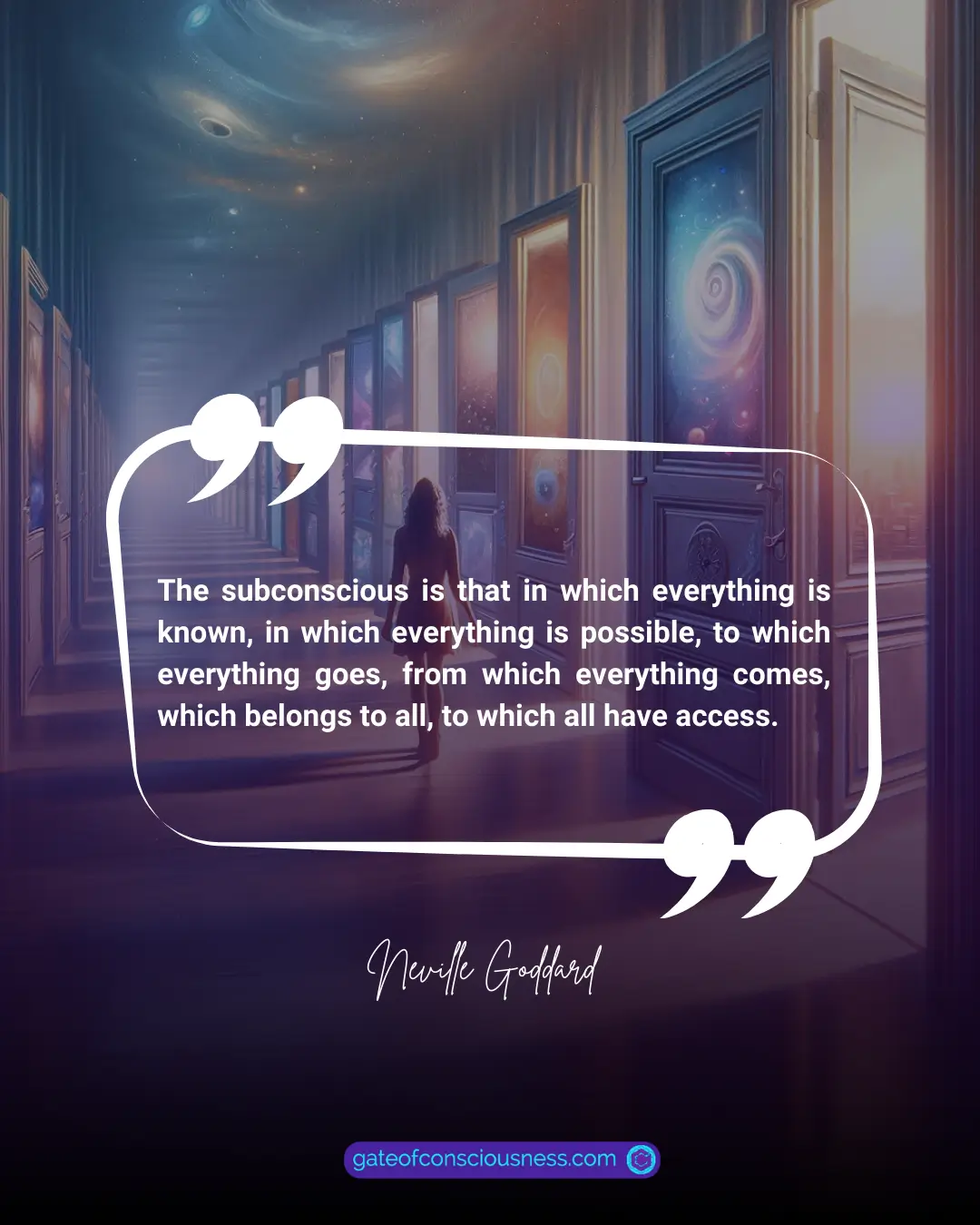
How to Read Neville Goddard’s Books
Okay. By now, you have a summary of Neville Goddard’s books and know in which order to read them. It’s equally important to address how to read them as well.
Goddard’s material may not be the easiest to grasp, as it goes deeply into metaphysical ideas.
Here are a few tips that may help in understanding it better:
1. Take It Slowly
Don’t feel you need to understand everything at once. So, take your time.
Neville’s teachings reveal new layers with repeated exposure.
2. Reflect
Reflect on the lessons to intuit meanings rather than mentally analyzing.
Neville teaches from a philosophical/mystical perspective.
3. Think How Does It Apply to You
Relate concepts to your own experiences to ground abstract ideas in familiar reality.
While you read, ask questions like, “How does this lesson apply to me?“
4. Refer to Other Resources
Refer to Neville’s other books and resources for supplemental explanations on similar principles discussed more practically.
Look for overarching themes like the creative power of consciousness rather than getting stuck in details.
5. Frustration Is Not Allowed
It may take time for profound insights to crystallize from such dense material.
Don’t get frustrated by confusion – an “Aha!” moment may come later when your awareness has expanded.
6. Share Your Knowledge
Discuss interpretations with others to get new perspectives and clarify muddy passages.
Remember, Neville’s goal is generally expanding perception, not just information exchange.
The Best Neville Goddard Books: Conclusion
It’s time to wrap this up.
I hope you enjoyed this blog post about the best Neville Goddard books.
His books are full of insights and inspiration on how to use your mind to transform your life.
I’ve presented the 15 best Neville Goddard books as objectively and honestly as possible.
To do this, I have read and listened to each of them, some specifically for writing this blog post. My conclusions have been drawn from my personal knowledge and online research.
If you have any questions or feedback, please feel free to comment below. I would love to hear from you.
Thanks for reading this long post to the end!
All the best in your manifestation journey.






Who Was Neville Goddard Really? The Life and Teachings of a Manifestation Master | Gate of Consciousness
November 25, 2024 @ 3:35 pm
[…] In his lifetime Neville wrote 15 books on the power of the mind. […]
December 26, 2024 @ 1:39 pm
This is the best information on Neville Goddard’s books I could find online! I truly appreciate the time and effort you put into writing this.
December 26, 2024 @ 1:59 pm
Thank you for your lovely comment! That particular blog post was truly a labor of love. I spent so much time diving back into Neville Goddard’s books (rereading some classics and even exploring a few for the first time) all to create something that would be meaningful and insightful for readers like you. Positive feedback like yours makes every moment of that effort so worthwhile.